History
The history of Islam being practised by the Dir clan goes back 1400 years. In Zeila, a Dir city, a mosque called Masjid al-Qiblatayn is known as the site of where early companions of the Prophet established a mosque shortly after the first Migration to Abyssinia [12] By the 7th century, a large-scale conversion to Islam was taking place in the Somali peninsula, first spread by the Dir clan family, to the rest of the nation. [13]
The early Adal Kingdom (9th century to 13th century) was an exclusive kingdom with its capital being Zeila. [14] In the 10th century, the Jarso clan a sub-division of Dir established the Dawaro Sultanate centred in Hararghe Highlands.
Dir is one of the oldest clans in the Horn of Africa. According to the Muslim chronicles, two of the oldest monarchies in the northern region, the Ifat and Adal sultanates, were led by Dir. [15]
The Dir, along with the Akisho, Gurgura, Issa and Gadabuursi subclans of the Dir represent the most native and indigenous Somali clan tree in Harar. [16] [17] [18]
The city Dire Dawa was originally called Dir Dhabe and used to be part of Adal Sultanate during the medieval times and was exclusively settled by Dir which is a major Somali tribe and after the weakening of Adal Sultanate, the Oromos took advantage and were able to penetrate through the city and settle into these areas and also assimilate some of the local Gurgura clan. [19]
The Somali Dir clan used to be the predominant inhabitants of Hararghe Highlands in the medieval times until the weakening of Adal Sultanate the Oromos took advantage of the crippling state and decided to invade and occupy the Haraghe Highlands and assimilate the local native Somali population which were Gurgura and Bursuk who were all sub-clans of Dir a major Somali tribe tree and were later confederated into Oromo Ethnics, the Afran Qallo tribes .
The Dir were supporters of Imam Ahmad ibn Ibrahim al-Ghazi during his 16th century conquest of Abyssinia; especially the Gurgura, Issa, Bursuk and Gadabuursi. [20] In his medieval Futuh Al-Habash documenting this campaign, the chronicler Shihāb al-Dīn indicates that thousands of Dir soldiers took part in Imam Ahmad's Adal Sultanate army. [21]
The Dir clan also led a revolt against the Italians during the colonial period. This revolt was mainly led by the Biimaal section of the Dir. The Biimaal clan is widely known for leading a resistance against the colonials in southern Somalia.The Biimaal violently resisted the imposition of colonialism and fought against the Italian colonialists of Italian Somaliland in a twenty-year war known as the Bimal revolt in which many of their warriors assassinated several Italian governors. This revolt can be compared to the war of the Mad Mullah in Somaliland. [22] [23] [24] The Biimaal mainly lives in Somalia, the Somali region of Ethiopia, which their Gaadsen sub-clan mainly inhabits and in the NEP region of Kenya. [25] [26] The Biimaal are pastoralists. They were also successful merchants and traders in the 19th century. [27] In the 19th century they have engaged in multiple wars with the Geledi clan, which they were victorious in. [27] [24]
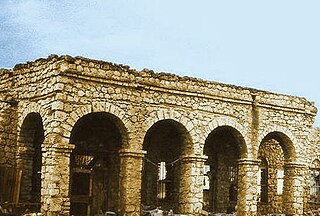
Awdal is an administrative region (gobol) in western Somaliland. It was separated from Woqooyi Galbeed and became a province in 1984 and is the most northwesterly province of Somaliland. To the east it borders Maroodi Jeex and Sahil; to its north-west it borders Djibouti; to its south and south-west lies Ethiopia; and the Gulf of Aden to its north. The province has an estimated population of 1,010,566. The region comprises the four districts of Borama, the regional capital, Baki, Lughaya, and Zeila.

The Eidagalle is a major Somali clan of the Isaaq clan family. Members of this clan are concentrated in Somaliland and the Somali region. They are the traditional holders of the Isaaq Sultanate since the 18th century. As descendants of Ismail bin Sheikh Isaaq, its members form a part of the Habar Magaadle confederation, and they constitute the largest sub-clan of the Isaaq. They traditionally consist of nomadic pastoralists, merchants and skilled poets.

The Isaaq is a major Somali clan. It is one of the largest Somali clan families in the Horn of Africa, with a large and densely populated traditional territory.
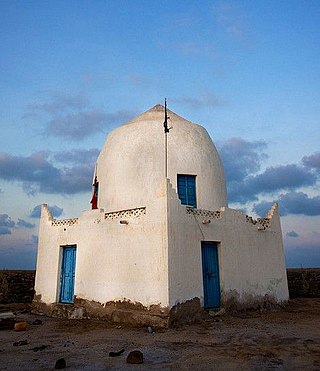
Zeila, also known as Zaila or Zayla, is a historical port town in the western Awdal region of Somaliland.
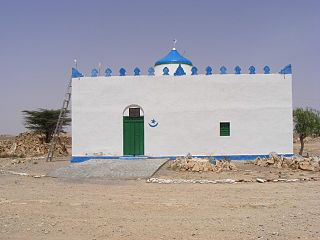
The Darod is a Somali clan. The forefather of this clan is Sheikh Abdirahman bin Isma'il al-Jabarti, more commonly known as Darod. The clan primarily settles the apex of the Horn of Africa and its peripheries, the Somali hinterlands adjacent to Oromia (Ogaden), and both sides of the Kenya–Somalia border. The Darod clan is the largest Somali clan family in the Horn of Africa.

The Garre are a prominent Somali clan that traces its lineage back to Samaale, who is believed to have originated from the Arabian Peninsula through Aqiil Abu Talib. The Garre clan is considered to be a sub-clan of the Digil-Rahanweyn clan family, which is part of the larger Rahanweyn clan. However, genealogically, they are descended from Gardheere Samaale. The Garre are also categorized as southern Hawiye as well.

The Gadabuursi, also known as Samaroon, is a northern Somali clan, a sub-division of the Dir clan family.
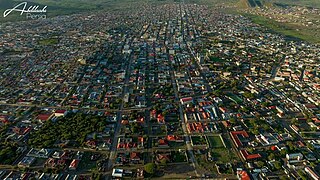
Borama is the largest city of the northwestern Awdal region of Somaliland. The commercial seat of the province, it is situated near the border with Ethiopia.

The Marehan is a Somali clan, which is part of one of the largest Somali clan families, the Darod.
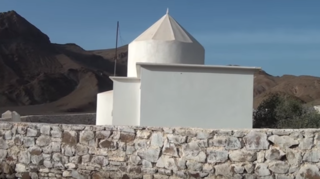
The Issa is a northern Somali clan, a sub-division of the Dir clan family.
Over the course of the Somali Civil War, there have been many revolutionary movements and militia groups run by competing rebel leaders which have held de facto control over vast areas within Somalia.

The Habr Awal, also contemporarily known as the Habar Awal, Subeer Awal, and alternately known as the Zubeyr Awal is one of the largest subclans of the wider Isaaq clan family, and is further divided into eight sub-clans of whom the two largest and most prominent are the Issa Musa and Sa'ad Musa sub-clans. Its members form a part of the Habar Magadle confederation.

The Bimaal or Bimal, are a sub-clan of the major Dir clan family. This clan is widely known for leading a resistance against the colonials in southern Somalia for decades which can be compared to the war of the Sayyid in Somaliland. The Biimaal mainly lives in southern Somalia, the Somali region of Ethiopia, which their Gaadsen sub-clan mainly inhabits.
The Reer Nuur, also known as Nuur Yoonis, is a northern Somali clan, a sub-division of the Makahiil sub-clan of the Gadabuursi clan family.

Awbare, officially known as Teferi Ber and called after its patron Saint Awbare, is a town in eastern Ethiopia located in the Fafan Zone of the Somali Region, near the border with Somaliland on the main trade route between Jijiga and the sea. It is the administrative centre of the Awbare district.

Borama District is a district of the Awdal region in Somaliland.
The Gurgura, Gorgorah or Gurgure is a northern Somali clan, a sub-division of the Dir clan family.

The Akisho is a northern Somali clan, a sub-division of the Dir clan family.
The Makayl-Dheere also known as Makaahiil-Dheere (Makayldheere), is a northern Somali clan, a sub-division of the Makahiil sub-clan of the Gadabuursi Dir clan family.
The Habar Makadur, also known as Habar Makadoor, Habar Makadour, or Habar Maqdi, are a subsection of the Gadabuursi Dir clan family.













